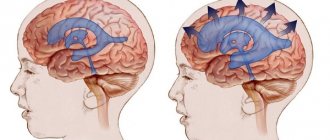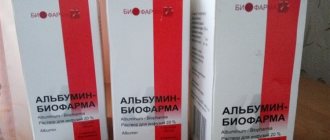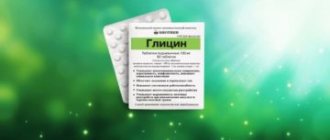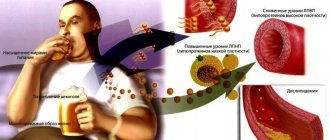Relaxation after training
Relaxation
Relax after all the neck exercises. As you exhale, pull your shoulders towards your ears and lower them, and so on several times. Make a series of head tilts forward, reaching your chin to the sternum, and bends back, bringing your shoulder blades together. That's it, the head massage is over.
⚠️ The information in the article is for educational purposes only. All your actions must be coordinated with your doctor or other specialist at your local clinic!
Good health to you, dear readers!
Yandex.Zen channel
Head massage for ICP
Only a doctor can determine the severity of the condition and prescribe proper treatment. A procedure such as massage should be carried out by a qualified specialist. It is necessary to learn the basic movements and execution methods at the initial stage. Then you can perform self-massage at home. Standardly, with increased high-frequency pressure in adults, the massage therapist kneads the back of the head (if a headache occurs in the temple area, then rubbing in this area is necessary). When performing self-massage, it is convenient to place your palms on the top of your head and move the thumbs of both hands from the back of your head to your neck. The procedure is allowed to be performed daily. In addition to reducing headaches, the normal movement of cerebrospinal fluid (CSF) is stimulated.
To effectively combat high HF pressure, craniosacral therapy is used. This is manual therapy consisting of soft, light rubbing. The specialist performs various manipulations, including pressing on certain points of the head and neck, as a result of which headaches disappear, nerve function is normalized, and the general condition improves. The duration of the massage is from 30 minutes to 1 hour.
Do not forget about a balanced diet, if possible, eat dried fruits, it is advisable to limit the intake of fatty, salty, spicy foods. People with such a symptom as increased intracranial pressure should be wary of climate change, avoid stressful situations, overwork, refuse saunas, steam baths, they need a sleep and rest schedule.
Gymnastics for the treatment of intracranial pressure
Therapeutic exercises for ICP can act as both an alternative to some medications for drug treatment, and an effective preventive measure to reduce the risk of attacks. Depending on the diagnosis, the doctor selects techniques that are aimed at normalizing ICP, alleviating the general condition and reducing headaches.
The most common exercises in therapeutic exercises for intracranial hypertension:
- Using smooth movements, tilt your head to the right and left, touching your ears to your shoulders, forward and back, pulling your chin to your chest. After this, you should slowly rotate your head in both directions. Each element of the exercise is performed on average 20 times. In the first days, pain may occur due to tension in the neck muscles, but subsequently, when performing this exercise, the discomfort will disappear.
- Place both hands behind the neck and clasp the lower part of the back of the head with them so that the thumbs are on the neck muscles located at the level of the earlobes. After this, you need to run your fingers up and down over the neck muscles for 15 minutes to provoke the outflow of blood from the brain. This exercise allows you to feel instant relief in your temples and back of your head.
- Take a small round stick in both hands, place it behind your head, and with light pressure for 15 minutes, move it from the lower part of the back of the head along the neck muscles located to the right and left of the vertebrae, and back.
- Do slow stretches every morning and evening to activate muscle function throughout the body and normalize blood circulation.
- To reduce ICP and headaches, perform breathing exercises. To do this, you need to sit up straight, inhale through your nose, and hold your breath for a few seconds. Exhale slowly through pursed lips. The duration of the exercise is several minutes, and you need to carefully observe your own sensations.
Exercises aimed at reducing ICP should be performed carefully, without sudden movements, independently or with someone's help. At the initial stage of the treatment process, a complex of light and gentle elements of gymnastics is prescribed, which become a little more complicated every day.
Symptoms
The symptoms of hypertension in children vary. Some require medical intervention, while others will get by with a simple massage. Here is an example of symptoms:
- increased excitability;
- loss of appetite in a child;
- sleep disturbances, itching;
- restlessness, constant whims, etc.;
- enlargement of blood vessels in the head.
Hidden symptoms of increased intracranial pressure in children can easily be confused with signs of other diseases or the normal condition of the baby, so parents are required to pay close attention to their baby. Especially during lactation, you should massage him more often.
Head massage
Before performing the massage, sit on a chair and lean on its back. Take a comfortable, comfortable position.
Pressure should be applied using the fingertips. The painful sensations that may arise indicate that you have hit the right point.
1. Place your left palm around the front of your neck, just below your lower jaw. With the pad of your thumb, feel the pulsation of the carotid artery. Inhale and press the artery for 5-10 seconds, then exhale and release. Repeat three times. Switch hands: with your right hand, press on the symmetrical point.
2. Place your palms on the top of the back of your head. Swipe them slowly and with some effort, sliding down. Stroke the neck and collarbone area. Perform this technique for 1-2 minutes.
3. Place the fingertips of both hands on the lower edge of the occipital region and perform circular movements, pressing on the points at the base of the skull. Actively massage the entire area from one ear to the other, periodically stroking the back of the neck from top to bottom. Do the exercise for 2-3 minutes.
4. Place your palms on the back of your head and use the pads of your thumbs to press firmly on all points at the base of the skull (the pain may be severe - this is normal). Work on each pair of points for 1-2 minutes.
At the end of the self-massage session, repeat the second technique.
AMONG THE REASONS CAUSING INTRACRANIAL PRESSURE MAY BE:
- head injuries,
- inflammation of the membranes of the brain,
- rupture of a section of a cerebral artery,
- constricted blood vessels,
- tumors
- congenital hydrocephalus (water on the brain),
- release of a large amount of cerebrospinal fluid, disruption of its circulation or absorption.
SYMPTOMS OF INCREASED INTRACRANIAL PRESSURE IN ADULTS
In addition to elevated values (more than 100-180 mmHg) characterizing intracranial pressure, the symptoms of this disease are as follows:
PREVENTION OF INCREASED INTRACRANIAL PRESSURE:
- You should limit or completely eliminate salt intake, go on a special diet prescribed by your doctor;
- Strictly dosed fluid intake;
- The doctor may prescribe special exercises to improve blood pressure;
- Complete refusal of baths or saunas;
- For sleeping you need to choose high pillows;
- Swimming in the pool is recommended to reduce intracranial pressure;
- Acupuncture and physical therapy may be prescribed;
- Visiting a massage therapist - special attention should be paid to massage of the collar area;
- Significantly improves well-being by consuming foods containing potassium (green vegetables, potatoes, dried apricots, many citrus fruits);
- It is strictly not recommended to fly by air, dramatically change the climate and atmosphere of residence, or time zones;
- Physical activity should be moderate to reduce and normalize intracranial pressure.
Did you like the article? Write your opinion in the comments. Subscribe to our FB:
Cranial therapy
Cranial therapy is a type of alternative medicine that is aimed at reducing intracranial pressure. The therapy has a unique technique: thanks to a special effect on the cranial bones, the regulation of the cerebrospinal fluid is normalized, and the blood flow is stabilized.
Cranial therapy consists of several special techniques. For example, the popular “unfolding” is aimed at relaxing soft tissues. After it, the patient plunges into a state of relaxation and enjoys lightness in the head area. This therapy is very effective and absolutely safe. It is carried out only in specialized centers. But that is another story.
Diagnosis of the disease in children
The need and type of treatment for the baby is prescribed only after a detailed medical examination of the signs and causes of the disease.
The research proceeds as follows:
- Oral diagnosis (clarification of prenatal, birth and postpartum features of the baby’s life course).
- Superficial examination (head measurement, checking reactions, muscle tone...).
- Carrying out a procedure to measure intracranial pressure (neurosonography - ultrasound examination of the head cavity through an unopened fontanel).
- An encephalogram and tomography can also be performed. These methods not only allow you to measure intracranial pressure, but also assess the condition of the ventricles of the brain.
- Using puncture of the ventricles of the brain and spinal puncture, you can find out the exact indicators of the baby’s ICP. These 2 procedures can be prescribed if other research methods are ineffective or insufficiently informative.
If the problem is nevertheless diagnosed, the causes of ICP are simultaneously determined and a course of treatment is selected, taking into account age and individual characteristics.
Healthy sports
If an athlete has been diagnosed with increased ICP, he should know that there are a number of sports activities that are allowed for this disease and a list of prohibited activities. The first group includes activities with moderate load. The duration of the workout and level of difficulty are chosen by the doctor. There are no completely safe exercises for this diagnosis, but the following sports are allowed:
- relaxing types of swimming (not at speed);
- water aerobics;
- stretching;
- yoga;
- Pilates;
- easy running;
- a ride on the bicycle.
Consistency in exercise and a gradual increase in loads are very important for patients. A sharp intensification leads to jumps in ICP and significantly complicates the treatment process.











